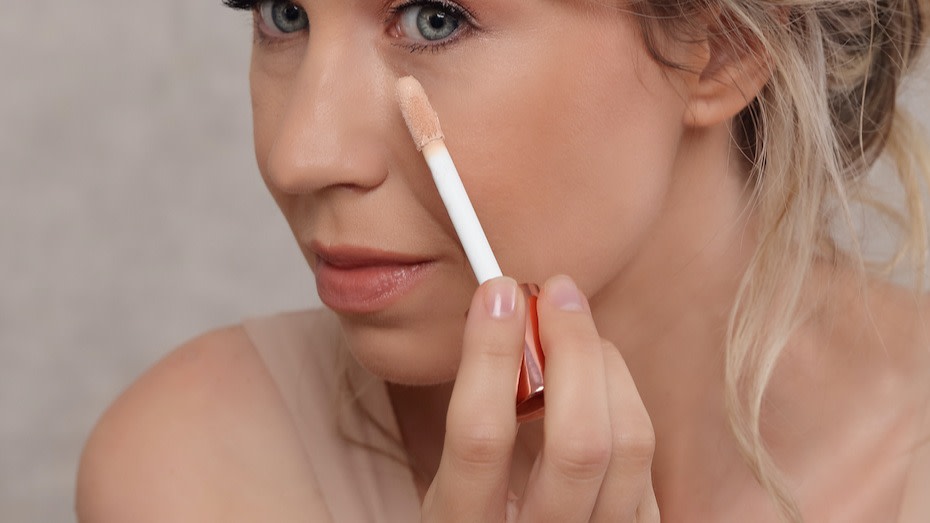How to Pick Concealer Color: 5 Tips for a Concealer Color Match
Written by MasterClass
Last updated: Apr 14, 2022 • 4 min read
Concealer is a makeup bag essential. It’s crucial to find the right concealer shade for your skin tone for a natural look. Learn how to pick concealer color based on your skin’s undertones with these makeup tips.
Learn From the Best
What Is Concealer?
Concealer is a beauty product made of skin-colored pigments formulated to hide blemishes and dark circles. Applying concealer to your face before adding foundation or other makeup products helps create an even complexion and color-correct any skin redness. Some concealers also provide benefits for specific skin types. For example, concealers with hyaluronic acid have hydrating effects that help treat dry skin.
As a versatile makeup product, you can use concealer to cover dark spots, reduce fine lines, contour your face, outline your lips, and diminish the appearance of dark circles under your eyes. When using concealer on your skin, always apply a moisturizer and SPF first to prevent creasing and protect your skin from UV exposure.
5 Types of Concealer
Consider your skincare needs and makeup goals when selecting a concealer. A few common varieties of concealers include:
- 1. Color-correcting: Some concealers contain green, red, purple, or yellow pigments that cover and neutralize different skincare concerns and treat different forms of discoloration. For example, while green concealer counteracts and covers redness in the skin, purple concealer brightens and enhances your skin tone.
- 2. Cream: For heavy coverage, consider using a cream concealer. These concealers come in a small palette or tube and use strong pigments to hide blemishes. Since the texture of this concealer is thick and results in a satin finish, it suits normal or dry skin types.
- 3. Liquid: With a thin, milky consistency, liquid concealers work on all skin types. You can layer liquid concealer for minimal or full coverage and use it to hide dark circles under your eyes. Liquid concealers come in both matte and dewy finishes.
- 4. Spot: Also known as stick concealers, spot concealers treat and cover blemishes, creating a full-coverage look. Spot concealers often come in twist-up containers that make it easy to target individual marks. If you have pimples or acne scars in one area of your face, consider using a spot concealer to cover blemishes.
- 5. Under-eye: While you can use any type of concealer—liquid, cream, or spot—to cover dark circles, you can find concealers specifically designed for the under-eye area. Since the skin around the eyes is delicate, under-eye concealers have a thin consistency that easily blends into the skin. These concealers penetrate the pores without requiring you to rub or pull at your skin.
How to Pick Concealer Color: 5 Tips
Choosing the best concealer for your needs depends on your beauty routine and natural coloring. Follow this guide to select a concealer that matches your skin undertone.
- 1. Determine your skincare concerns. Whether you should use a skin-tone concealer or a color-correcting concealer depends on your skin concerns. If you’re trying to minimize redness in your skin, opt for a color-correcting concealer. These types of bright concealers follow the rules of the color wheel, so select a color-correcting concealer that is opposite of the skin color you’re trying to cover. Orange and yellow are opposite blue and purple on the color wheel, so concealers in these shades help brighten and cover dark circles under your eyes; for darker skin tones, try orange concealer and opt for yellow concealer to cover under-eye circles in lighter skin tones. On the other hand, choose a concealer that matches your skin tone if spot treatment or full coverage is your main skincare concern.
- 2. Identify your skin color. There are three undertones: warm, cool, and neutral. Complexions with warm undertones have blue veins with a green tint, while skin colors with cool undertones have blue veins with a purple tint. If your skin has a neutral undertone, then your veins will look like a combination of both green and purple. Concealers use different tints to match warm, cool, and neutral skin tones, so identifying your natural hues can help you choose the right concealer color.
- 3. Narrow it down to three shades. Select three concealer shades that match your skin tone. Try to pick three shades that vary slightly, selecting one lighter, one darker, and one neutral concealer shade.
- 4. Test the concealers on your cheek. Makeup artists suggest trying different shades of concealer with a swatch test along your cheek and jawline. Applying a small amount of each concealer to your face is the best way to determine your shade match, but another option is to apply each shade to the inside of your wrist. As you massage the product into your skin, look at how the concealer matches your face and neck under natural lighting, as artificial lighting can distort the concealer’s appearance. This will help you select the concealer shade that best mimics your natural skin tone.
- 5. Go one shade lighter for an under-eye concealer. While concealer for the general areas of your face should match your skin tone, under-eye concealer should be one or two shades lighter than your natural coloring. Using a lighter concealer for your eye area helps cover up under-eye circles and creates a brightening effect.
Learn More
Get the MasterClass Annual Membership for exclusive access to video lessons taught by the world’s best, including Bobbi Brown, RuPaul, Anna Wintour, Marc Jacobs, Diane von Furstenberg, and more.
